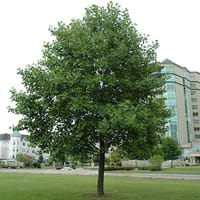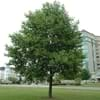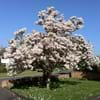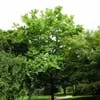Life Span
Perennial
Perennial
Origin
Northeastern United States, Mid-Atlantic United States, Southeastern United States, Central United States
Asia, Europe, North America
Types
Ardis, Arnold, Aureomarginatum
Black Ash, Blue Ash, California Ash, Carolina Ash, European Ash
Number of Varieties
Not Available
Habitat
Bluffs, low mountains, Moist Soils, Woodlands
Forest edges, Hillside, Woods
USDA Hardiness Zone
5-9
3-9
Sunset Zone
1a, 1b, 2a, 2b, 3a, 3b, 4, 5, 6, 7, 8, 9, 10, 11, 12, 14, 15, 16, 17, 18, 19, 20, 21, 22, 23
9, 12, 13, 14, 15, 16, 17, 18, 19, 20, 21, 22, 23, 24
Habit
Pyramidal
Oval or Rounded
Flower Color
Orange, Light Yellow
White
Flower Color Modifier
Bicolor
Not Available
Fruit Color
Lime Green, Brown
Not Available
Leaf Color in Spring
Green, Light Green
Dark Green
Leaf Color in Summer
Green
Dark Green
Leaf Color in Fall
Yellow, Light Yellow, Yellow green
Dark Green
Leaf Color in Winter
Not Available
Dark Green
Leaf Shape
Irregular
Oblovate
Plant Season
Spring, Fall
All year
Sunlight
Full Sun, Partial Sun
Full Sun, Part sun
Type of Soil
Clay, Loam
Loamy, Sandy
The pH of Soil
Acidic, Neutral
Acidic
Soil Drainage
Average
Well drained
Bloom Time
Late Spring
Late Spring, Spring
Tolerances
Soil Compaction
Drought, Pollution, Soil Compaction
Where to Plant?
Ground
Ground
How to Plant?
Seedlings
Grafting, Seedlings, Stem Planting, Transplanting
Plant Maintenance
Low
Medium
Watering Requirements
Do Not over Water, Keep the ground moist but not water-logged, Requires regular watering
Does not require lot of watering, Medium, Prefer drip-irrigation instead of Over-head watering
In Summer
Ample Water
Lots of watering
In Spring
Moderate
Moderate
In Winter
Average Water
Average Water
Soil pH
Acidic, Neutral
Acidic
Soil Type
Clay, Loam
Loamy, Sandy
Soil Drainage Capacity
Average
Well drained
Sun Exposure
Full Sun, Partial Sun
Full Sun, Part sun
Pruning
Prune ocassionally, Remove dead branches
Prune in winter, Prune prior to new growth
Fertilizers
All-Purpose Liquid Fertilizer, fertilize in spring, Fertilize the soil instead of direct applying, Mulch
All-Purpose Liquid Fertilizer
Pests and Diseases
fusarium canker, nectria canker, yellow-poplar weevil
Bark splits, Crown gall, Epicormic Sprouting, Woodpecker feeding
Plant Tolerance
Soil Compaction
Drought
Flower Petal Number
Not Available
Single
Foliage Texture
Coarse
Medium
Foliage Sheen
Matte
Glossy
Allergy
no allergic reactions
Not Available
Aesthetic Uses
Showy Purposes
Not Used For Aesthetic Purpose
Beauty Benefits
Not Available
Not Available
Environmental Uses
Shadow Tree, Shelter for wildlife
Air purification
Medicinal Uses
Arthritis, Digestion problems, Fever, Inflammation, Wounds
Fever, Liver problems
Part of Plant Used
Whole plant
Leaves, Stem
Other Uses
Food for animals, Grown for shade, Used as Ornamental plant, Used in Furniture
Used as Ornamental plant
Used As Indoor Plant
No
No
Used As Outdoor Plant
Yes
Yes
Garden Design
Feature Plant, Shade Trees, Street Trees
Shady Tree, Showy Tree
Botanical Name
LIRIODENDRON tulipifera
Fraxinus
Common Name
Tulip Poplar, Yellow Poplar
Ash Tree
In Hindi
ट्यूलिप पेड़
राख पेड़
In German
Tulpenbaum
Esche
In Spanish
árbol de tulipán
Fresno
In Greek
δέντρο τουλίπα
δέντρο Ash
In Portuguese
árvore de tulipa
Freixo
In Polish
tulipanowiec
Jesion
In Latin
Tulipa arbore
Fraxinum
Phylum
Tracheophyta
Anthophyta
Class
Magnoliopsida
Magnoliopsida
Order
Magnoliales
Lamiales
Family
Magnoliaceae
Oleaceae
Genus
Liriodendron
Fraxinus
Clade
Angiosperms, Magnoliids
Angiosperms, Asterids, Eudicots
Tribe
Not Available
Oleeae
Subfamily
Not Available
Not Available
Season and Care of Tulip Tree and Ash Tree
Season and care of Tulip Tree and Ash Tree is important to know. While considering everything about Tulip Tree and Ash Tree Care, growing season is an essential factor. Tulip Tree season is Spring and Fall and Ash Tree season is Spring and Fall. The type of soil for Tulip Tree is Clay, Loam and for Ash Tree is Loamy, Sandy while the PH of soil for Tulip Tree is Acidic, Neutral and for Ash Tree is Acidic.
Tulip Tree and Ash Tree Physical Information
Tulip Tree and Ash Tree physical information is very important for comparison. Tulip Tree height is 1,830.00 cm and width 1,070.00 cm whereas Ash Tree height is 75.00 cm and width 45.00 cm. The color specification of Tulip Tree and Ash Tree are as follows:
Tulip Tree flower color: Orange and Light Yellow
Tulip Tree leaf color: Green and Light Green
Ash Tree flower color: White
- Ash Tree leaf color: Dark Green
Care of Tulip Tree and Ash Tree
Care of Tulip Tree and Ash Tree include pruning, fertilizers, watering etc. Tulip Tree pruning is done Prune ocassionally and Remove dead branches and Ash Tree pruning is done Prune in winter and Prune prior to new growth. In summer Tulip Tree needs Ample Water and in winter, it needs Average Water. Whereas, in summer Ash Tree needs Lots of watering and in winter, it needs Average Water.





